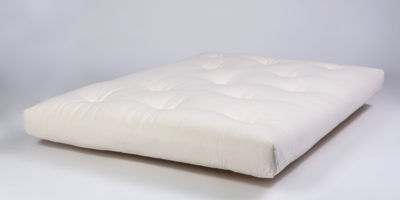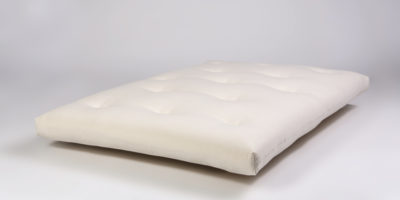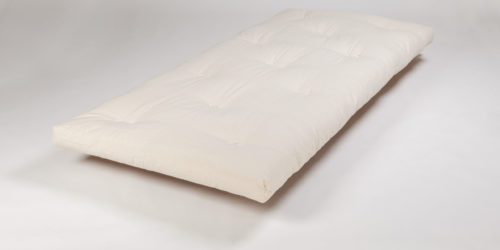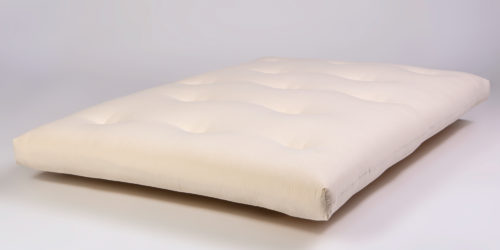Futons are Famous for Stable Sleep
All our futons contain layers of authentic cotton batting. This cotton padding is the basis of stable support that is unique to futons. Additional materials make a futon softer, firmer or more weight supportive.
Every futon is handmade by our futon specialist to your order specifications.
Futon Mattress - Authentic Hand Crafted Mattresses
hand-craft: a skilled activity in which something is made in a traditional way with the hands...
Made from the following materials to provide the qualities you'll love.
- Raw cotton has been used in mattresses for centuries, and is still the best material for stable sleep support because it has no 'push back', just padding. To make the feel that you prefer, Futonz use layers of this cotton in each futon along with other materials.
- Latex is incredibly supportive, distributing weight effectively and contouring to the body. We recommend latex futons for sleeping on every night. Latex futons last longer than other futons.
- Wool is a natural insulator with the incredible qualities of warmth in winter and coolness in warmer weather; a natural climate control. Wool 'breathes', enabling air to flow through the fibres and allowing mattress humidity to disperse.
- Polyester fibre panels are light and resilient. Our Firm Poly Core futon is a firm and very durable mattress.
All our futons are encased and tied in unbleached cotton canvas.
Futon Mattress Care
Futonz natural futons are constructed from layers of quality natural fibres: cotton, wool and latex rubber. They are tightly contained in a hand-tufted 100% cotton casing: do not remove this casing! To keep the futon casing clean, we recommend using our zip-off, machine washable futon protector on beds, or a futon cover on sofa beds.
Following these simple instructions will ensure your futon retains its quality and comfort.
- Maintaining The Loft
- When using your futon as a bed, turn the futon weekly from head to tail and over; so that the side that was against the slats faces up.
- Allow the futon to drop vigorously onto the slats when you turn it.
- We recommend doing this once a week and when you change your bedding.
- If you use your futon as a settee, turn it regularly to ensure different areas are used as the seat.
- Occasionally, in dry sunny weather, you can drape your futon where it is exposed to the fresh air and sunlight for a few hours. This causes the cotton strands to unfurl, and regain fluffiness, revitalising the filling. Caution: do not risk it being rained on!
- If you are storing your futon long-term we recommend a day in the sun, then pop it into a big airtight bag to keep it dry.
- If kept in damp areas, futons are susceptible to mould! Make sure you keep your futon dry and turn it as recommended.
For more information on Futon choice, materials and care, please see our FAQ.





